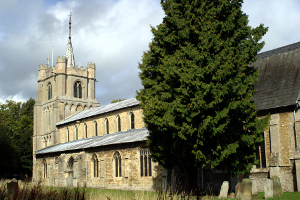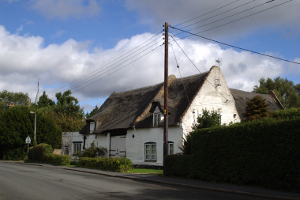This article needs additional citations for verification .(February 2009) |
| Elm | |
|---|---|
 All Saints Church, Elm | |
Location within Cambridgeshire | |
| Population | 3,962 (2011) |
| OS grid reference | TF477062 |
| District | |
| Shire county | |
| Region | |
| Country | England |
| Sovereign state | United Kingdom |
| Post town | Wisbech |
| Postcode district | PE14 |
| Dialling code | 01945 |
| Police | Cambridgeshire |
| Fire | Cambridgeshire |
| Ambulance | East of England |
| UK Parliament | |
Elm is a village and civil parish in the Fenland District of Cambridgeshire, England. In Domesday, it is called Helle. [1]
Contents
- History
- Prehistoric
- Roman period
- Medieval period
- Modern period
- Community facilities
- Landmarks
- Notable people
- References
- External links
The village is about 11⁄2 miles or 21⁄2 km south of the market town of Wisbech, immediately to the south of the Wisbech by-pass. The county boundary with Norfolk is immediately to the north and north-east. The northern part of Elm village, at Elm Low Road, acts as a suburb of Wisbech. Most of the village straddles the B1101 road, which meanders its way between Wisbech and March.
The civil parish had a resident population of 3,295, as recorded during the 2001 United Kingdom census. The population including Coldham, Collett's Bridge, Friday Bridge and Ring's End was 3,962 at the 2011 Census. [2]


